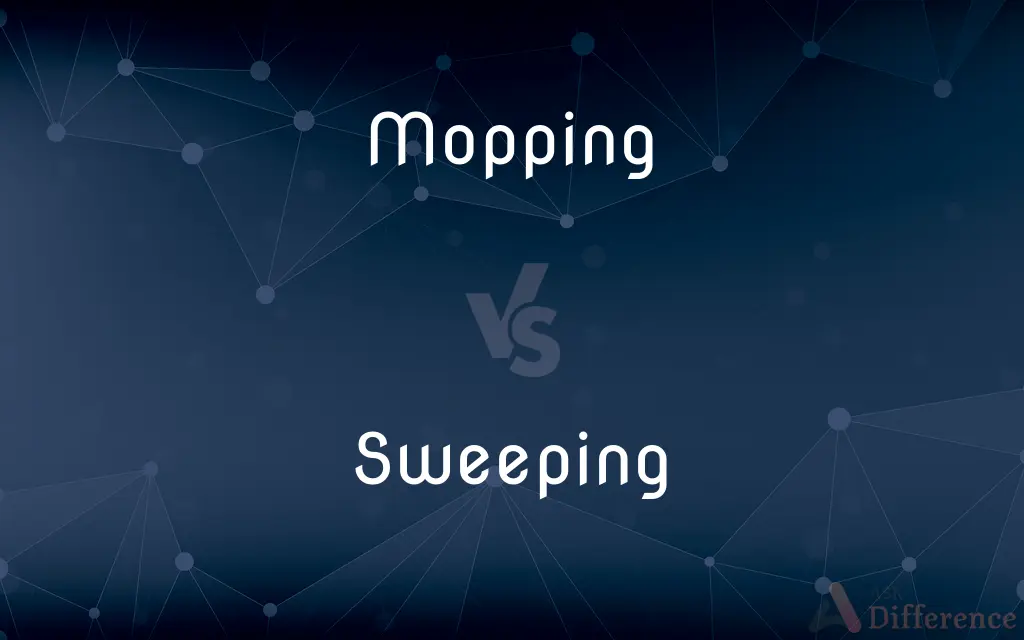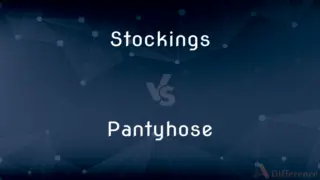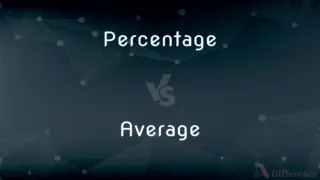Mopping vs. Sweeping — What's the Difference?
Edited by Tayyaba Rehman — By Urooj Arif — Updated on April 4, 2024
Mopping involves wet cleaning floors with a mop, ideal for removing stains and disinfecting, while sweeping uses a broom to collect dry debris and dust.

Difference Between Mopping and Sweeping
Table of Contents
ADVERTISEMENT
Key Differences
Mopping is a cleaning process that utilizes a wet mop to clean floors, often involving cleaning solutions to remove dirt, grime, and stains. This method is particularly effective for tile, vinyl, and hardwood floors that can withstand moisture. On the other hand, sweeping is a dry method using a broom or brush to gather dust, dirt, and debris from floors. Sweeping is typically the first step in floor cleaning, especially on surfaces where mopping is intended to follow for a deeper clean.
While mopping is essential for removing stubborn stains and disinfecting floors, it requires preparation, including mixing cleaning solutions and sometimes changing water. This makes it a bit more time-consuming compared to sweeping. Sweeping, however, is quicker and more straightforward, involving only the broom and a dustpan to collect and remove debris. It's an effective method for daily maintenance of floors to prevent dust accumulation.
Different tools are used in mopping and sweeping; mops can be made of cotton, microfiber, or sponge materials, each designed for specific types of floors and levels of moisture. Brooms, on the other hand, may have soft or stiff bristles depending on the surface to be cleaned and the type of debris. For instance, soft-bristled brooms are ideal for indoor use on hardwood floors, whereas stiff-bristled brooms are better suited for outdoor surfaces or heavy debris.
The choice between mopping and sweeping often depends on the type of dirt, the flooring material, and the desired level of cleanliness. While mopping provides a deeper clean and is suitable for sticky or greasy messes, sweeping is ideal for quick clean-ups and removing loose dirt and dust. Regular sweeping can also extend the time between mops by keeping the floor relatively clean.
Comparison Chart
Method
Wet cleaning with a mop.
Dry cleaning with a broom.
ADVERTISEMENT
Purpose
Removes stains, disinfects.
Collects dry debris and dust.
Preparation
Requires water and cleaning solution.
Requires only a broom and dustpan.
Tools
Mops (cotton, microfiber, sponge).
Brooms (soft or stiff bristles).
Compare with Definitions
Mopping
Effective for stains.
Mopping is essential for removing coffee spills on the floor.
Sweeping
Less preparation needed.
Grabbing a broom and dustpan is all it takes to start sweeping.
Mopping
Disinfects surfaces.
Mopping with a disinfectant keeps the bathroom floor hygienic.
Sweeping
No need for water.
Quick cleanup with sweeping is efficient without dealing with water.
Mopping
Wet cleaning method.
Mopping the kitchen floor weekly prevents sticky residue build-up.
Sweeping
Collects loose debris.
Sweeping gathers pet hair and dust bunnies effectively.
Mopping
Involves cleaning solutions.
Using a vinegar solution for mopping can naturally disinfect floors.
Sweeping
Dry cleaning method.
Sweeping the living room daily keeps the dust away.
Mopping
Requires more setup.
Filling the mop bucket with the right cleaner takes extra prep time.
Sweeping
For daily maintenance.
Regular sweeping reduces the need for frequent deep cleaning.
Mopping
A household implement made of absorbent material attached to a typically long handle and used for washing, dusting, or drying floors.
Sweeping
Extending or performed in a long, continuous curve
Sweeping, desolate moorlands
A smooth sweeping motion
Mopping
A loosely tangled bunch or mass
A mop of unruly hair.
Sweeping
Wide in range or effect
We cannot recommend any sweeping alterations
Mopping
To wash or wipe with or as if with a mop
Mopped the hallway.
Mopping the spilled water.
Mopped her forehead with a towel.
Sweeping
Dirt or refuse collected by sweeping
The sweepings from the house
Mopping
To use a mop to wash or dry surfaces
Mopped along the baseboards.
Sweeping
Having wide-ranging influence or effect
Sweeping changes.
Mopping
Present participle of mop
Sweeping
Moving in or as if in a wide curve
A sweeping gesture.
A sweeping glance.
Mopping
The process of cleaning with a mop.
Sweeping
Indiscriminate; wholesale
Sweeping generalizations.
Mopping
An application of molten asphalt to a roof etc.
Sweeping
Overwhelming; complete
A sweeping victory.
Mopping
Cleaning with a mop;
He gave it a good mopping
Sweeping
The action of one that sweeps.
Sweeping
Sweepings Things swept up; refuse.
Sweeping
Present participle of sweep
Sweeping
(countable) An instance of sweeping.
The sidewalk needed a sweeping every morning.
Sweeping
(uncountable) The activity of sweeping.
Sweeping took all morning.
The sidewalk needed sweeping every morning.
Sweeping
Wide, broad, affecting or touching upon many things.
The government will bring in sweeping changes to the income tax system.
Sweeping
Completely overwhelming.
He claimed a sweeping victory.
Sweeping
Cleaning off surfaces, or cleaning away dust, dirt, or litter, as a broom does; moving with swiftness and force; carrying everything before it; including in its scope many persons or things; as, a sweeping flood; a sweeping majority; a sweeping accusation.
Sweeping
The act of cleaning with a broom
Sweeping
Taking in or moving over (or as if over) a wide area; often used in combination;
A sweeping glance
A wide-sweeping view of the river
Sweeping
Ignoring distinctions;
Sweeping generalizations
Wholesale destruction
Sweeping
Having broad range or effect;
Had extensive press coverage
Far-reaching changes in the social structure
Sweeping reforms
Common Curiosities
Can I sweep after mopping?
It’s best to sweep before mopping to remove debris; sweeping after can redistribute dust on the wet floor.
How often should I mop my floors?
It depends on foot traffic and use, but typically, kitchens and bathrooms should be mopped weekly.
Is mopping necessary for all floor types?
Most floors benefit from mopping for a deep clean, but some delicate wood floors may require special care.
Can I mop hardwood floors?
Yes, but use minimal water and a suitable cleaner to prevent damage.
Why should I mop instead of just sweeping?
Mopping disinfects and removes stubborn stains and spills, which sweeping cannot accomplish.
How do I choose the right broom for sweeping?
Choose soft bristles for indoor use and stiff bristles for outdoors or rough surfaces.
Is it okay to use vinegar as a mopping solution?
Yes, vinegar is a natural disinfectant, but check your floor's compatibility first.
What tools do I need for effective mopping?
A good mop, a bucket, and an appropriate cleaning solution are essential for effective mopping.
What’s the best way to maintain clean floors?
Regular sweeping for daily maintenance and periodic mopping for a deeper clean.
Do I need a special mop for tile floors?
Microfiber mops are effective for tiles, as they can clean grout lines well.
How can I make mopping more efficient?
Use a two-bucket system: one for cleaning solution and one for rinsing your mop.
How does the cleaning solution affect mopping?
The right solution can enhance cleaning efficiency and leave floors shining.
Can I use the same broom for indoors and outdoors?
It’s best to have separate brooms to prevent outdoor dirt from coming inside.
Why is sweeping considered a preliminary step to mopping?
Sweeping removes solids that could hinder the mopping process and ensures a cleaner finish.
Share Your Discovery

Previous Comparison
Stockings vs. Pantyhose
Next Comparison
Percentage vs. AverageAuthor Spotlight
Written by
Urooj ArifUrooj is a skilled content writer at Ask Difference, known for her exceptional ability to simplify complex topics into engaging and informative content. With a passion for research and a flair for clear, concise writing, she consistently delivers articles that resonate with our diverse audience.
Edited by
Tayyaba RehmanTayyaba Rehman is a distinguished writer, currently serving as a primary contributor to askdifference.com. As a researcher in semantics and etymology, Tayyaba's passion for the complexity of languages and their distinctions has found a perfect home on the platform. Tayyaba delves into the intricacies of language, distinguishing between commonly confused words and phrases, thereby providing clarity for readers worldwide.















































